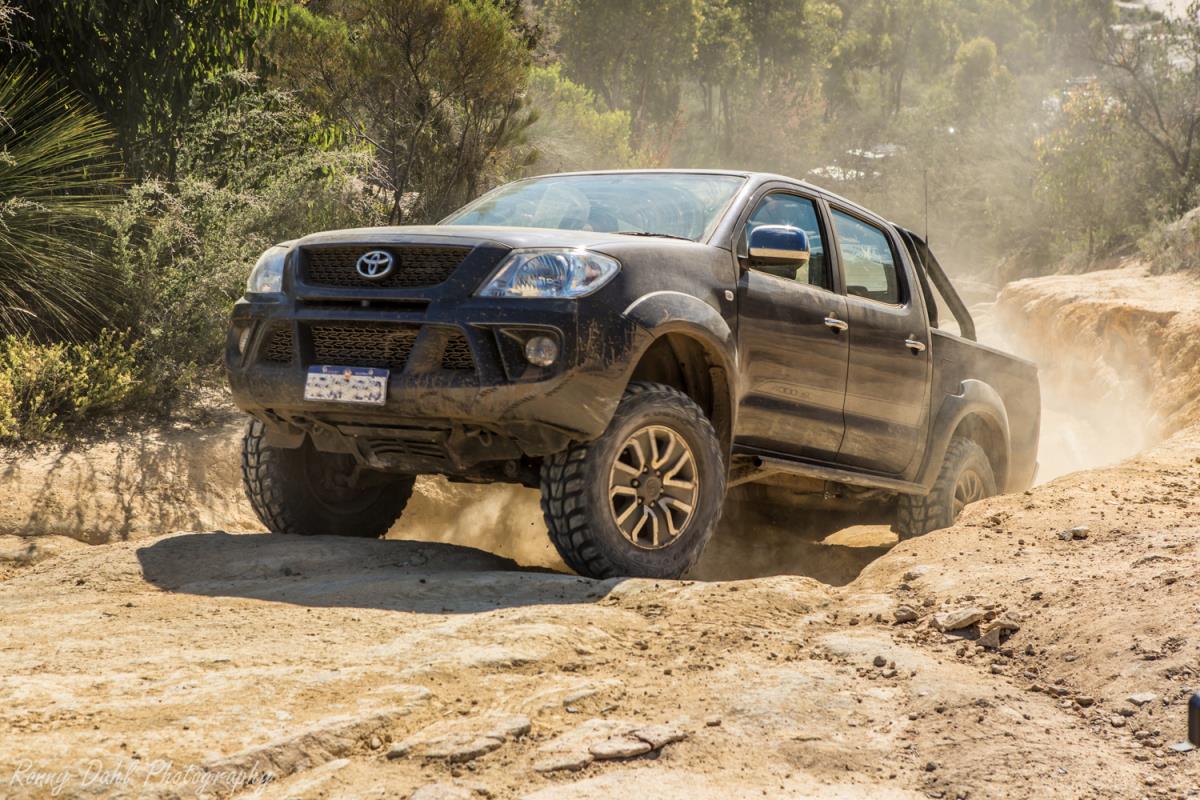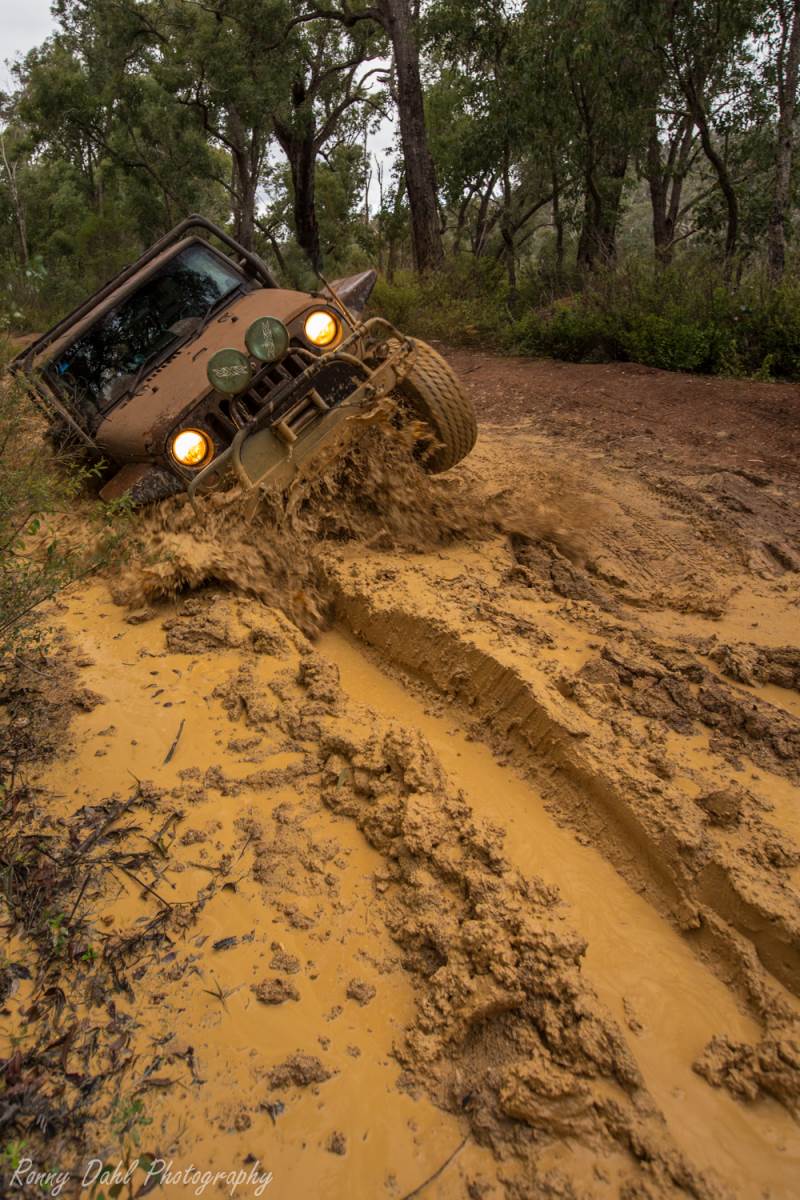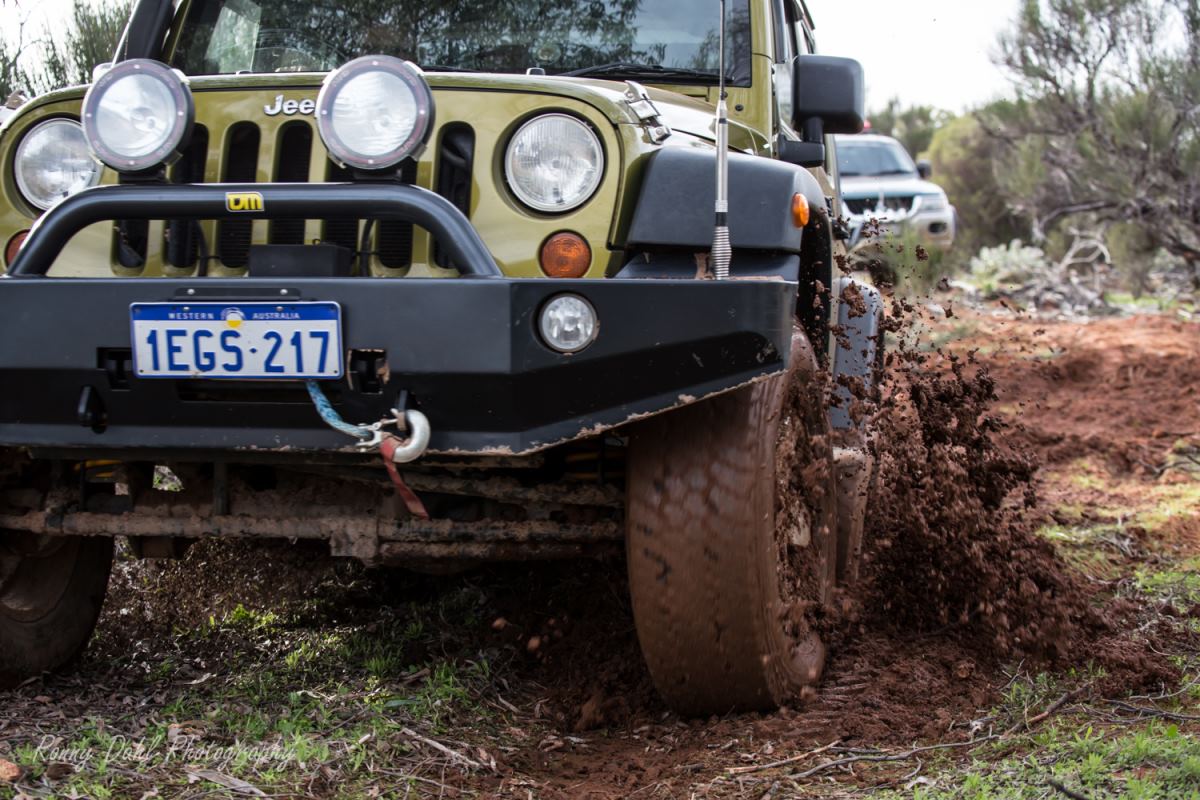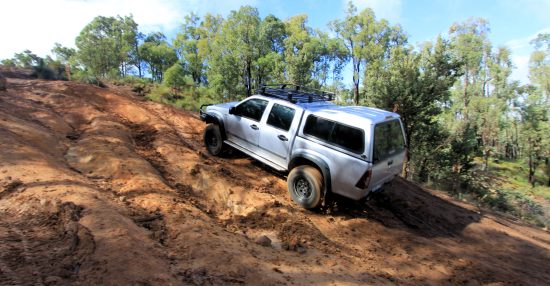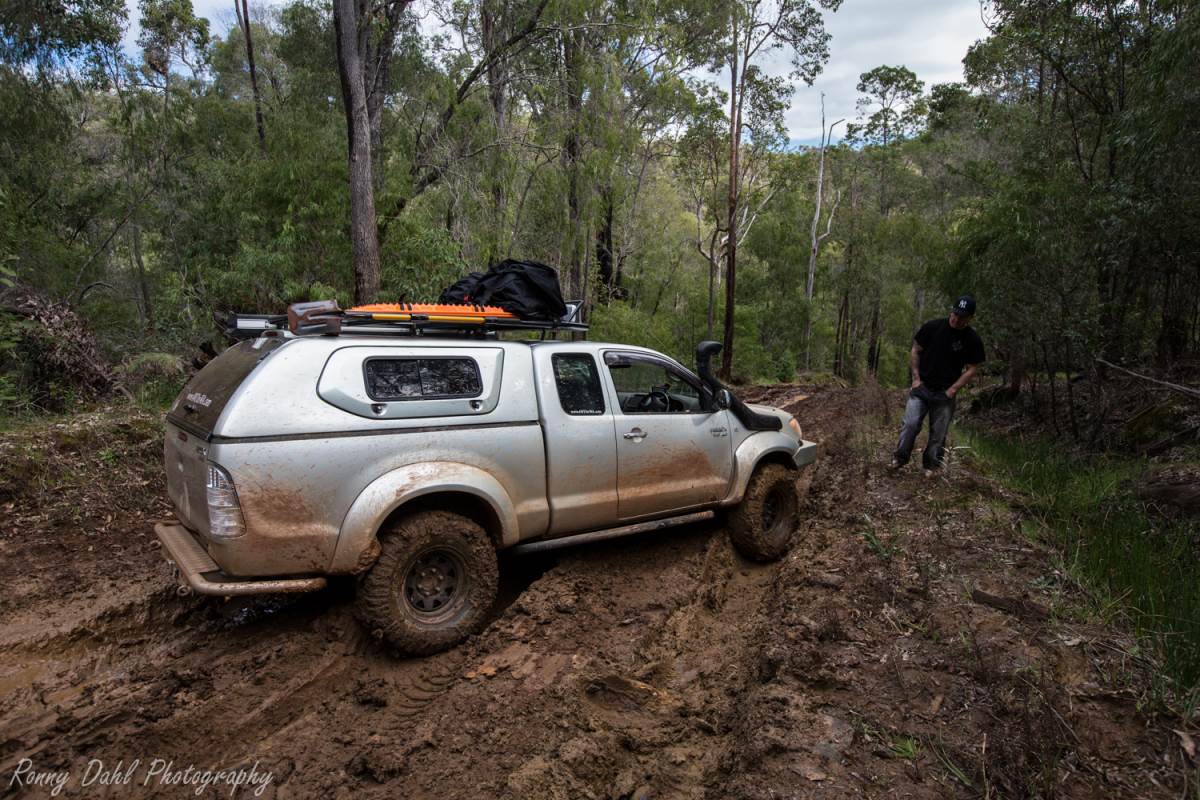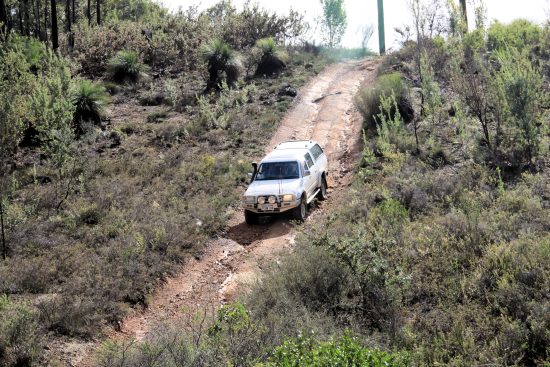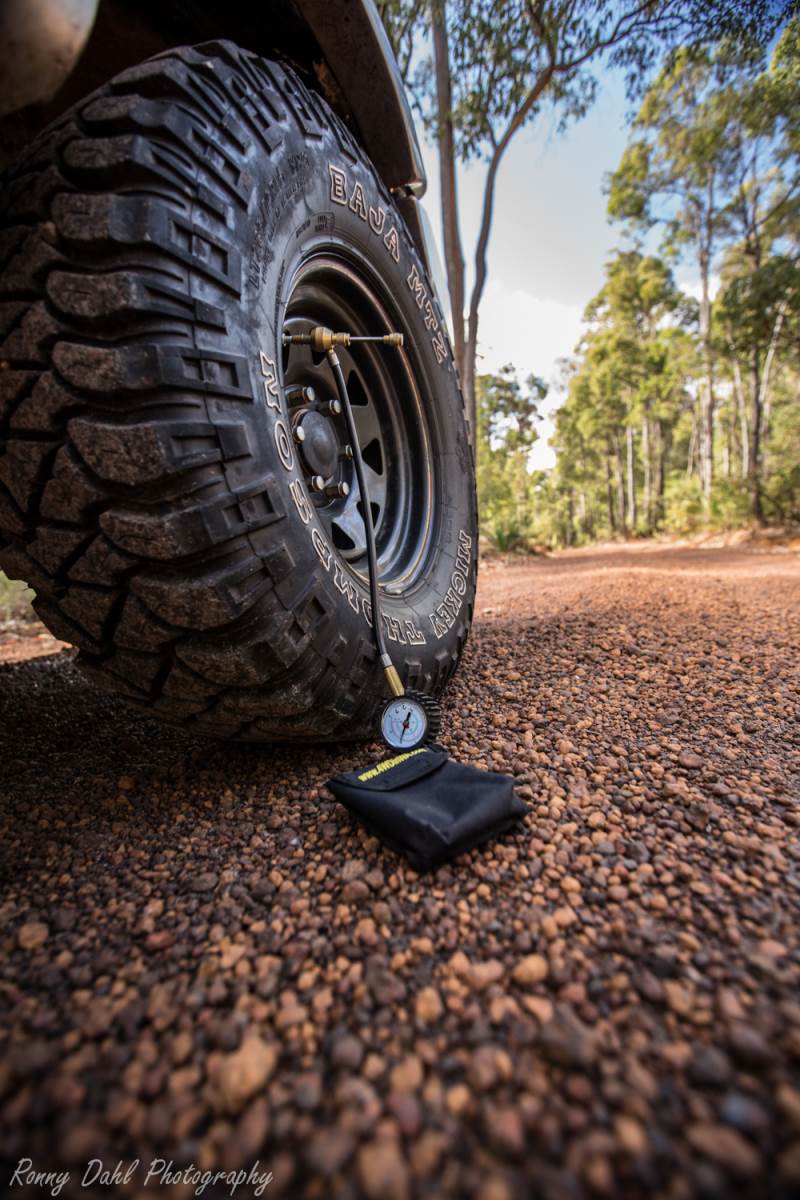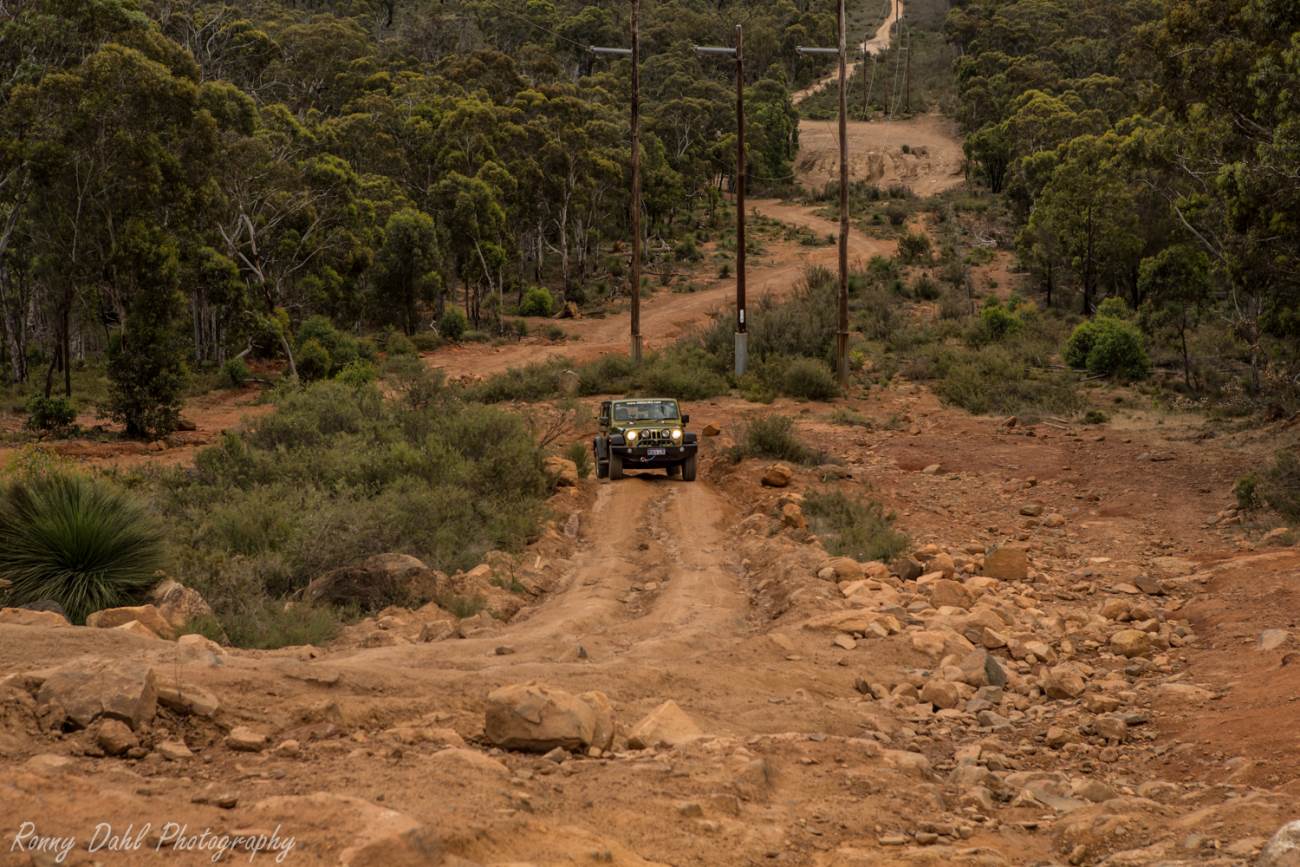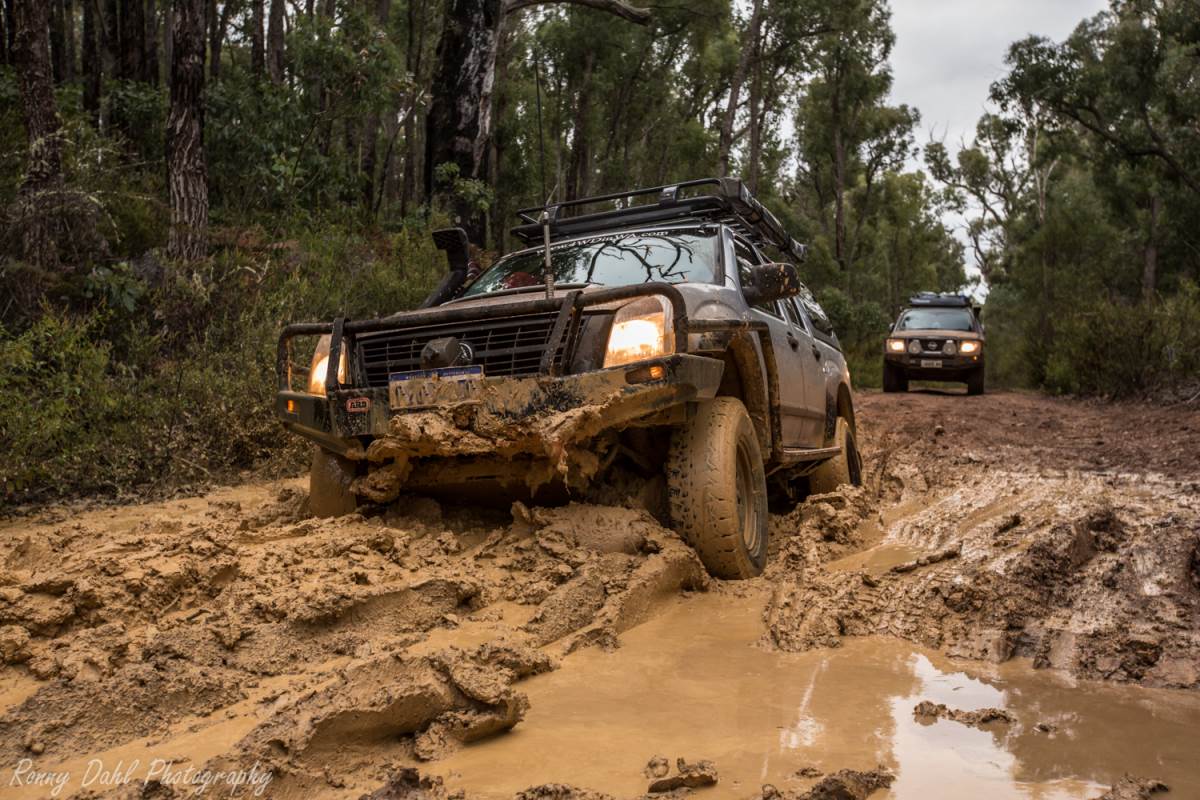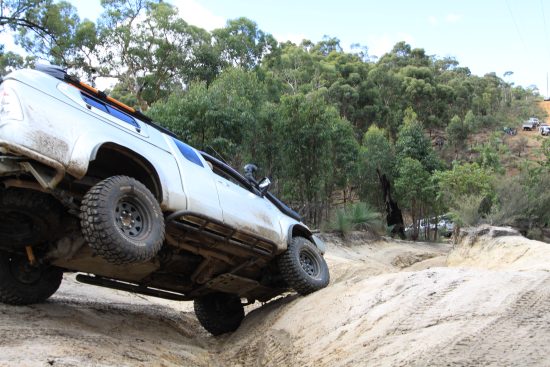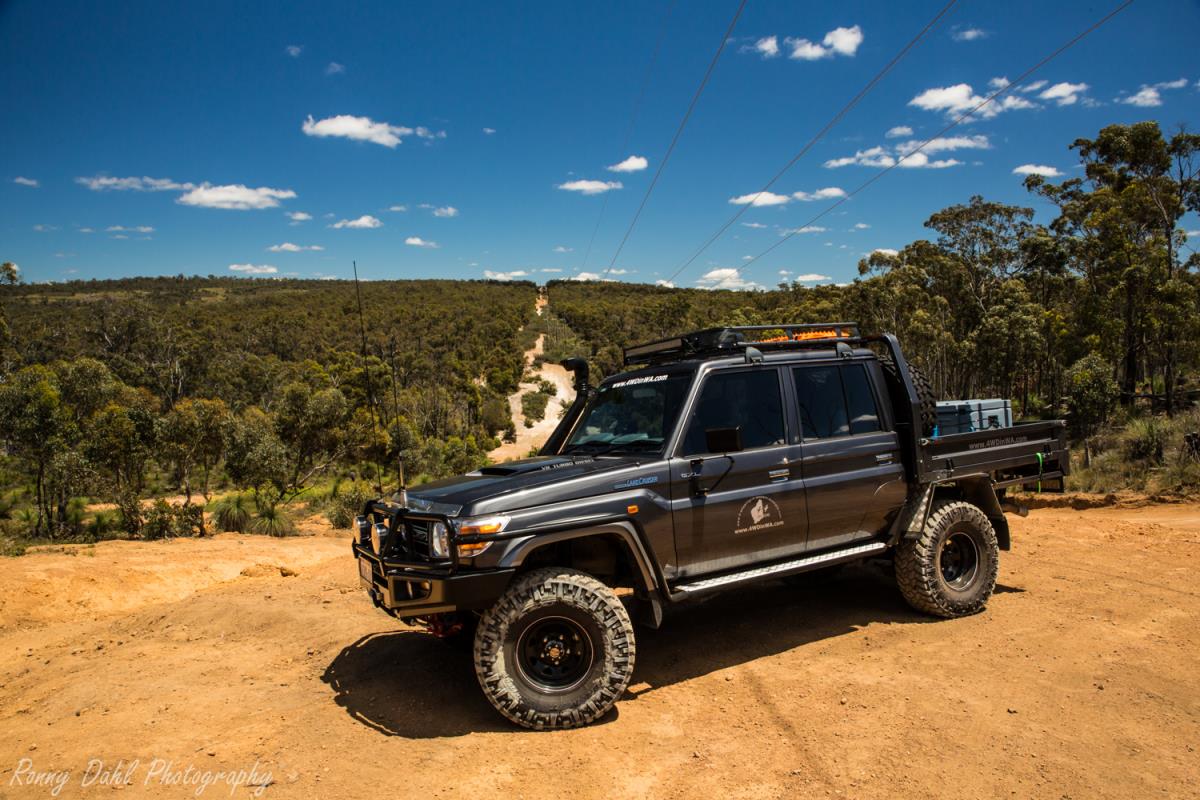
Clay Based Terrain.
You
will find clay based terrain in the hills and further inland. In winter it turns into mud and in summer dries into a dusty yet still slippery substance
due to the very fine dust particles that are very similar to bull dust.
Dry Track.
Apart from the dusty parts of the tracks the traction is quite good as it's almost as hard as rock, mud terrain tires are excellent as the side biters really assist when tackling ruts.
When driving down tracks with a bit of speed a dust cloud will follow, these dust clouds can be very long and hang about, so if following another 4x4 on a clay track, back off and give yourself a good distance as visibility can almost be zero at times due the dust.
With little visibility you may not see that fallen branch or massive pot hole in the middle of the clay track.
It's a good idea for the lead
vehicle in a group travelling, to call in track debris and oncoming vehicles to
warn the next driver.
Mud.
Mud
Glorious Mud!! Every 4 wheel driver I know loves mud, there is just something
about getting the 4x4 dirty and seeing the mud go flying off the tires whilst
they are spinning.
Not all mud is clay based, but where you find clay you will always find mud, if
it's been raining that is.
Mud terrain (M/T's) tires are the best when it comes to traction, the side
biters and cleaning lugs will keep you going a lot further than All Terrain's
(A/T).
I went from owning A/T's and after driving in the mud a few times I just had to get the M/T's as the A/T just didn't get any traction, since getting M/T tires I have really noticed the difference, now I actually have control of the direction I'm travelling in whereas before I was just sliding everywhere.
If starting to feel loss of momentum going through a very muddy section, turn
the wheels left and right, this will assist in getting traction from the side
biters on the M/T, some A/T brands have side biters also however they are
nowhere near as effective as the real off road mud tires.
More on Mud.
Mud pools on tracks are best navigated by going straight though the middle as that's where most of the traction is.
Going around the sides (if both sides are wet) can be worse. The middle of the track has traction at the bottom as the surface mud has already been carved out (well more than the sides), the untouched sides will have a thick layer of mud that will more than likely fill the tire tread with loads of mud turning them into slicks.
Racing slicks in mud
will just spin and so will All terrains tires filled with mud, mud terrains on
the other hand have a chance to rid of the mud with its aggressive pattern
flicking mud out of the tread.
Jeep Wrangler moving through mud.
Hill climbing on clay tracks.
One of the most fun 4 wheeling and sometimes very challenging is climbing big steep rutted out hills, add some water and the challenge is bigger.
Climbing a hill in the dry can still be very challenging at times as there could be big ruts, deep ruts, jagged rocks, big rocks, rock steeps, tree roots and gnarly angles, all of these can be on the same hill, add a tight corkscrew somewhere on the hill and you have one hell of a gnarly hill climb in from of you.
A tough clay hill in the dry could be an impossible or too dangerous climb in the wet, know your limit.
In the dry most experienced 4x4 drivers would straddle the ruts to avoid damaging the underside of the vehicle, on the same hill climb covered in mud it would be best to actually stick the wheels in the ruts, try to pick the shallow ones so there is less chance of contacting the ground with the 4x4's belly.
The reason for this is when it's dry the side biters on the tires will hold traction on the ruts and general driving tires will have excellent grip on the hard clay (with the right PSI) in the wet however straddling ruts is very dangerous as 9 times out of 10 the vehicle will slide into ruts and most of the time it's the deeper ruts, with sometimes cross rutting (the worst) I have done this and seen this happen many times, end result is hours of recovering.
Climbing clay hills in the dry usually requires low range 1st, 2nd or 3rd. Do not
change gears while climbing a steep clay hill, you will lose all momentum. When
reversing down a steep hill for whatever reason (maybe you got 3 quarters of
the way up and stalled) make sure you rely/trust reverse gear low range, never
just use the brake with the vehicle in neutral, the brakes will wear and could
over heat causing them to fade, sending you to the bottom of the hill before
you could say SHI.!!!!
Climbing hills in the wet usually require low range 2nd to 3rd with a good
amount of momentum and sometimes a lot of wheel spin. If you only make it
halfway up put it in reverse ASAP (sometimes it’s almost best to let the 4wd
stall as it won't cause a sudden stop especially in muddy situations) and do
not touch your brakes while in reverse as they will send you sideways or down
very fast, you must rely on reverse gear here. If you do in fact apply the
brakes by accident and start to slide, get off the brake and trust your reverse
gear.
Hill descents on clay tracks.
This can be harder than climbing a hill as you usually only get one attempt to get this right, as reversing back up a hill is not something that can really be done (You can't steer with the rear wheels).
If it’s a steep hill there is only one gear, 1st gear low range, any other gear
will be too fast. On a dry hill descent applying brakes now and again (for no
longer that a second or two) might be a good thing to do as some vehicles will
have a faster low 1st gear than another.
Changing gears on a steep descent is not a good idea even on a dry hill, once
the 4x4 is out of gear (in neutral) the only thing stopping it will be the foot
brake, which will overheat and fade if used on lengthy steep hills, the next
thing to stop you would then be a tree or another 4wd at the bottom.
When the steep descents are wet, muddy and slippery, pick the line very
carefully and commit to 1st gear low and trust it, do not apply your brake at
all cost on those very steep hills as it will cause the 4wd to lose traction
sliding down rapidly which will make it very hard to regain control, if the 4wd
has ABS, brakes still won't work in your favour (ABS is designed for Tarmac not
steep hills off road).
Clay hill descent.
If you do hit the brakes and the 4wd starts to skid get off the brake right away and let the wheels catch up to speed, once that happens you should gain control, from here leave it in 1st gear low (which it should already be in) and keep you foot away from the brake pedal and let the engine and gear box do the work.
When picking lines on mud descents use the ruts, sometimes there are multiple ruts to choose from, in this case pick the shallow ones to protect the underside of you vehicle. Keep in mind picking ruts that are too shallow (only 50-100mm deep) won't always secure the wheels, just a slight sideways movement can see you pop out and into a deeper rut or worse cross rutted and sliding down at the same time.
Tire pressures:
Driving on any terrain tire PSI is the most important part when it comes to actually getting anywhere.
If the pressure is too high the vehicle will struggle to move due to wheel spin, feel more bumps, and wear the clutch and other components.
Clay Based terrain require lower pressures as the ground is loose and very uneven, having PSI too high can and will cause the 4wd's to slide while cornering, hill climbing and hill descents, not many hills are straight up and down, a lot of tracks wind around hills and will have some of the tightest turns you could imagine so driving with the correct PSI will make a world of difference.
Jeep Wrangler climbing a clay & rocky track.
Some people learn the hard way, I remember once on some gnarly tracks in the Avon valley, one of my mates struggled up a particular hill climb while the rest of us made it up easy. Turns out he had 30 PSI in his tires, we came to the next hill that was bigger and tougher, the rest of us made it up and our mate at the bottom who had to take the chicken track last time decided to reduce his tire pressure as there was no chicken track this time. He made it up easy first go and was surprised at the difference it made.
Best tyre pressure for your 4WD will be different to the next persons 4WD. Mud
terrain tires are the best for clay tracks and all terrain do very well in
these conditions. However if wet and muddy, the obvious best tyre is the Mud
terrain the all terrain is still not bad but when the mud really gets deeper
than just 20-30mm they will struggle as they lack the self cleaning lugs that
the mud terrains have.
Some people say it’s best to keep the PSI high for mud driving, they are wrong
and have no idea, if PSI is too high you will get into trouble, possibly
sliding into a tree or tipping the 4x4 upside down as there will just be no traction.
The following chart is an approximate recommendation for tyre PSI:
General well used tracks: 20-25 Dry and wet
The less travel tracks (ruts and rugged): 16-20 Dry and wet
Hill climbs and descents: 16-20 Dry and wet
Don't go with too low pressures as tires are very easily pop off the rim in ruts, and don't go with too high pressures as tires are then more prone to damage and punchers.
For more information about tire PSI see this Link.
Dry Clay terrain and Mud Recovery.
Even with the best mud tires you will still get stuck at some stage, it can happen from just simply getting booted in deep mud, sliding into a rut, getting cross rutted (opposing wheels in ruts) or sliding of the track.
Winching is the preferred recovery method in muddy areas if there are angles, deep ruts or big rocks involved, so if there are trees around or a companion vehicle then there is a good anchor point to winch off. Winching can be a slow process but it is more controlled than snatching. If the mud is real sticky or the 4x4 is just badly bogged a double line pull may be necessary.
A double line pull is when a snatch block is anchored to a tree or vehicle with the winch rope/cable running into the snatch block and then back to the winching vehicle hooking on to a front recovery point. This allows the winch to pull almost double its pulling capacity (if 9500lbs then it nearly doubles to almost 19000lbs) halving the stress on the winch motor, rope/cable and recovery points, but will take twice as long. Snatch blocks also allow you to change direction of the recovery, there are endless tips and techniques on using winches.
Snatch straps are great for straight line and level ground recoveries. A lot of
4 wheel drivers will have a snatch strap already attached to a rear recovery
point and tucked into the rear tailgate or door when they know they are going
to encounter muddy situations, this saves you from getting out into the mud to
try and find a recovery point that may well be under the muddy waters.
For more information about winching see General 4x4 Vehicle Winch tips
Recent Articles
-
4x4 off road tracks 0 to 250 km from Perth
Nov 21, 23 07:40 PM
On this page we cover 4x4 off road tracks within a 250 km radius from Perth... -
4 Wheeling Around Jurien Bay.
Nov 21, 23 07:35 PM
Jurien Bay 4x4 tracks info and general information about the area... -
Carnamah caravan Park WA
Oct 10, 23 09:31 PM
This caravan park is very clean. The ablutions are spotless. The washing machines are free but need to keep them clean. Easy parking for big rigs and if
- Home
- Terrain Conquering
- Clay
Leave Clay Terrain And Go To Home Page.
